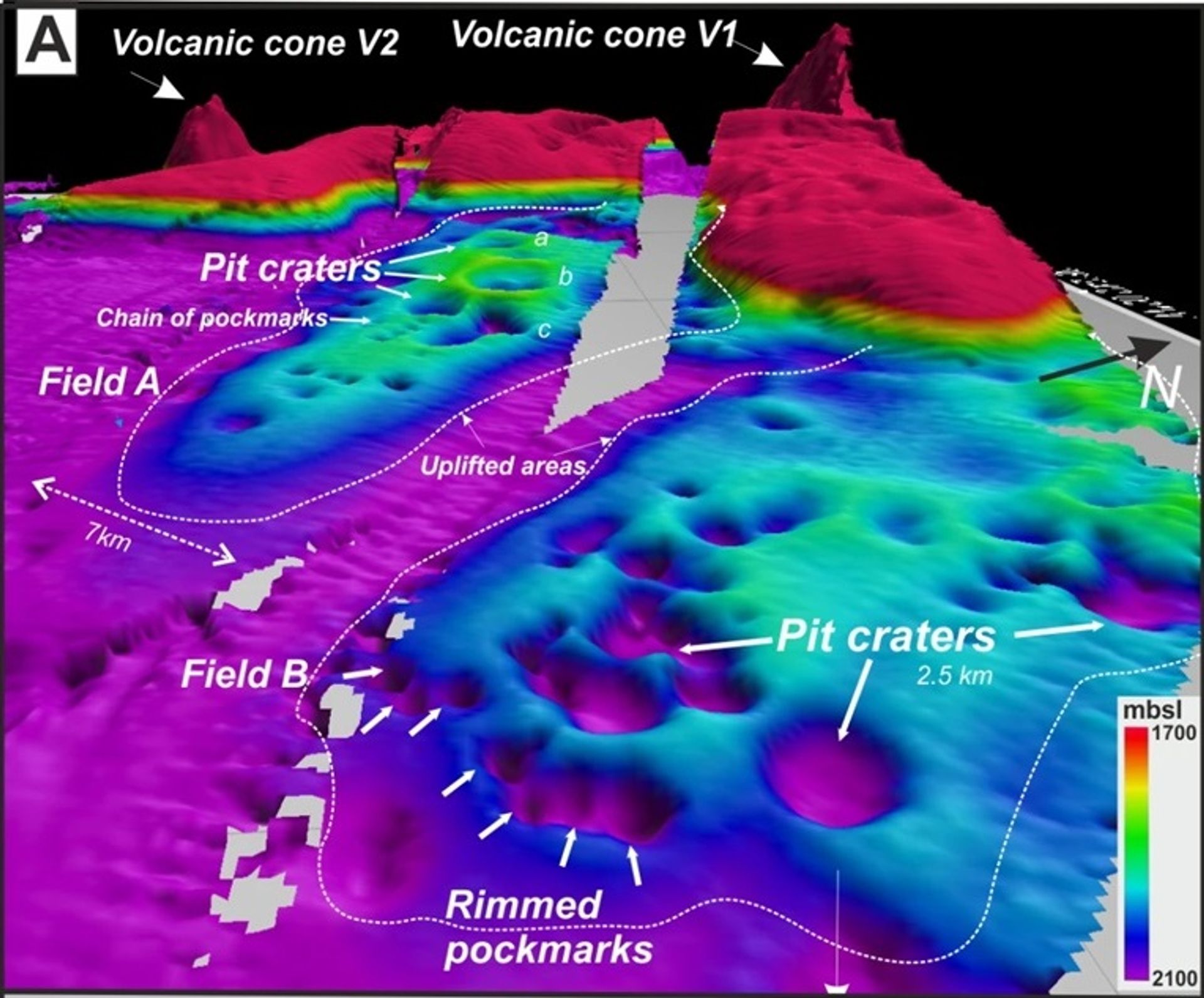Giant seafloor craters off Antarctica provide insights into carbon cycles and climate history
January 31st, 2025
A team involving iC3 researchers has documented 150 giant craters and pockmarks on the seafloor of the Scotia Sea.
These striking features, up to 2.5 km wide and tens of metres deep, reveal the aftermath of long-term geological processes driven by magma intrusions beneath the seabed off Antarctica.
The discovery sheds light on how ancient hydrothermal vent systems could have influenced Earth's carbon cycles and climate over millions of years.

Image credit: Nature Scientific Reports
Craters reveal Earth's history
The craters, located in the Scan Basin, sit atop vertical conduits or "pipes" that transported fluids from deep underground. These pipes connect to saucer-shaped magma intrusions called sills, which were injected into sedimentary layers millions of years ago.
Heat from the magma likely triggered the release of carbon-rich fluids, such as methane and carbon dioxide, that eventually reached the seafloor.
The team, which included Andreia Plaza-Faverola and Karin Andreassen from the iC3 Polar Research Hub in Tromsø, proposes two major phases of sill emplacement. The first occurred approximately 13 million years ago, while a second happened more recently, around 900,000 years ago. The younger phase coincided with the reactivation of fluid pathways, creating the expansive craters visible today.
.
How the study was conducted
The research team relied on multi-frequency geophysical tools to map the craters and their underlying structures. Seismic profiles and bathymetric imaging revealed the connection between the craters, fluid conduits, and underlying sills. By analysing the seismic data, they reconstructed the timing of magma emplacement and subsequent fluid venting.
Drilling data from the International Ocean Discovery Program (IODP) was also critical. It helped the researchers date the sediment layers surrounding the craters, providing a timeline of their formation and activity.
.
Implications for climate and carbon cycling
The study underscores the role of hydrothermal vent systems in Earth’s carbon cycle.
The release of carbon-rich gases from magma-heated sediments may have contributed to environmental shifts during Earth's history. However, these processes are slow and episodic, occurring over millions of years.
The research also provides a modern analogue for interpreting ancient hydrothermal vent complexes found in the rock record, such as those linked to global warming events like the Paleocene-Eocene Thermal Maximum.
However, unlike today’s rapid climate changes caused by human activities, these ancient events occurred over much longer timescales.
“The interpretation of these seafloor craters is a complex and difficult task, not least because they are in remote regions of the planet. This study gathered scientists around the globe with complementary expertise to provide a conceptual model of Antarctic craters in comparison to craters identified in other parts of the planet,” said Andreia.
“Understanding these past systems is important to better understand how natural carbon release mechanisms may affect the Earth's climate.”
.
The new study, “Giant pit craters on the modern seafloor above magma-induced hydrothermal vent complexes of Scotia Sea, offshore Antarctica,” is available open access in Nature Scientific Reports.
.
Andreia Plaza-Faverola is currently looking for a postdoctoral researcher to join her team in Tromsø. Candidates with expertise in seismology, geophysical and acoustic data analysis, or modeling of kinematics or fluid dynamics should email her their CV and a brief outline of their proposed research project.